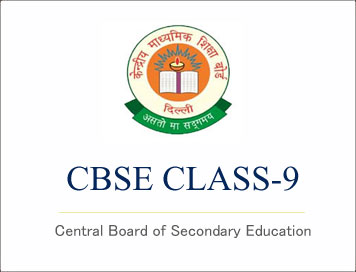CBSE Class-9 Syllabus 2019-20 (Painting)
Disclaimer: This website is NOT associated with CBSE, for official website of CBSE visit - www.cbse.gov.in
CBSE Class-9 Syllabus 2019-20 (Painting)
Syllabus :
"The secondary stage is apt for refining aesthetic sensibilities and promoting social values through projects on conservation of the natural and cultural heritage and through opportunities for studying Indian culture, working with artists/artisans of the community, organizing festivals and celebrations of the community at large, display of physical environment and surrounding landscape and their exploration; projects to promote creative expression and exhibition of works in visual and verbal forms" is one of the recommendations of the National Curriculum Framework 2005.
This is the stage where students have already gained the skill of drawing and painting to an extent to create and communicate through simple images and colours. The focus of the painting curriculum should be to provide students with an opportunity to explore natural and man made objects, situations and subjects to learn about the elements and principles of painting while enjoying their creative expression through different mediums and
techniques.
The course consists of (i) Painting theory and (ii) Painting practicals. Theory and Practice are co-related and complement each other by application of medium and technique. Theory can make students understand the medium they are practicing with all its beauty and meaning. Theory provides knowledge and enhances the value of the practical.
Learning outcomes:
Students after studying 'Painting' as additional subject will be able to:
- Enjoy paintings as a medium of expressions
- Appreciate the beauty in lines, forms and colours
- Know the fundamentals of Painting (Elements and Principles) and apply them in their creations.
- Use painting tools and materials appropriately.
- Apply pencil colours, oil pastels, poster colours, water colours etc. as a painting medium.
- Differentiate between 'opaque' and 'transparent' colours as a technique.
- Refine memory and observation power through study / still life and painting composition.
- Maintain his/her painting tools, materials appropriately.
- Display his/her paintings aesthetically and will learn to store them.
- Apply the artistic skills of composition in day-to-day life at home and in the school.
Suggested Teaching Learning Strategies - IX :
i. Still Life (Study of simple objects)Study of a group of two or three objects from a fixed point of view in colours. Group may include vegetables, fruits, foliage, book, drapery, and simple objects of daily use.
ii. Simple compositions based on any one form of Folk Art such as Madhubani, Warli, Alpana, Rangoli, Mandana etc.
iii. Field visits to Art Galleries, Museum/s, National BalBhawan or similar organisations, Artist’s studios or Artisan’s workshops etc.
iv. Sketches from Life and Nature in pencil and ink.
v. Teacher can tell story of Indian Art in a story telling manner. This can also be audio/video recorded and shared with students.
vi. Display of reproductions of master’s work in school corridors.
vii.Submission of portfolio consisting of six( 3 Still Life and 3 Composition) selected works done during the year.
(B) PAINTING
Code No.: 049
Class IX
Marking Scheme
Theory
- Total Marks: 30 marks
- Hours: 2
UNIT- I: Fundamentals of Painting (The Elements of Art) 10 Marks
UNIT-II : Methods and Materials of Painting 10 Marks
Understanding and appropriate use of
- i. Tools
- ii. Painting Materials –Poster Colours, Water Colours, Oil Pastels and Pencil
- iii. Transparent and Opaque colours and techniques.
UNIT-III: Areas of Drawing and Painting: 10 Marks
- i. Sketching from Nature and Imagination
- ii. Still Life and
- iii. Painting composition. Story of Indian Art covering painting, sculpture and architectural glimpses.
Click Here To Download Full Syllabus
Courtesy: CBSE
